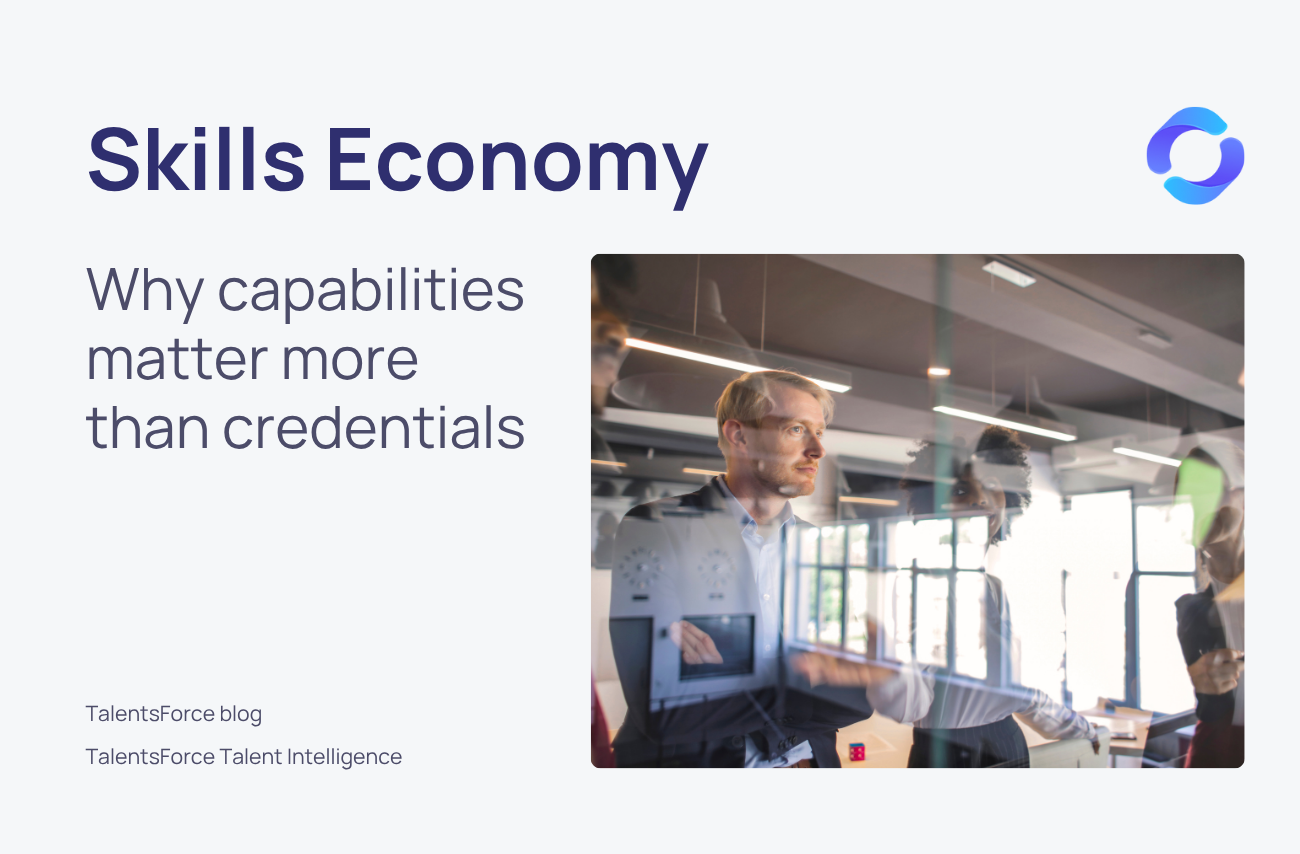APAC firms are losing millions due to persistent talent shortages and slow, outdated hiring processes. Now, as work dynamics and employees' skills evolve holistically (as a result of AI and Gigs), skill-native hiring, along with a supported platform, is required for the skills economy of the future.
Skills-native hiring builds all talent systems on a foundation of structured skills data, enabling faster, more accurate hiring and connecting every stage of the talent lifecycle.
Defining skills-native hiring
Skills-native hiring refers to a talent acquisition approach where skills serve as the foundational data layer for all recruiting decisions, workflows, and systems. Similar to skills-based hiring (which focuses on removing degree requirements) or skills-first hiring (which prioritizes skills assessment in evaluation), skills-native hiring combines both. It is built on a foundation of structured skills intelligence, supporting the core architecture of how organizations source, assess, and select candidates.
The skills-native platform
1. Skills foundation layer: At the base sits a normalized skills taxonomy, a structured database that standardizes how skills are named, categorized, and related to each other across the organization. This foundation converts varied terminology (like "project management," "PM," and "managing projects") into a single standardized skill. It maps relationships between skills (understanding that Python and data analysis often appear together) and maintains proficiency levels that distinguish novice from expert capabilities.
2. Intelligence layer: Machine learning and AI models build on the skills foundation to infer missing skills, predict candidate success, and surface hidden talent. Natural language processing extracts skills from resumes and job descriptions automatically. Recommendation engines match candidates to roles based on skills alignment rather than keyword matching. Predictive analytics identify which skills correlate with high performance in specific roles.
3. Application layer: The visible workflows that recruiters and hiring managers use daily—sourcing, screening, interviewing, and selecting all operate using the skills intelligence beneath them. Candidates appear ranked by skills match percentage. Job descriptions auto-populate with market-standard skills requirements. Skills availability rather than job titles organizes talent pools.

What skills does native hiring mean for your organization
For talent acquisition leaders, recruiters, and HR managers facing today's hiring challenges, skills-native hiring offers a path forward that addresses multiple pain points simultaneously.
Speed advantage in competitive markets
When candidates hold multiple offers and expect fast responses, reducing time-to-shortlist becomes a competitive necessity. Skills-native matching enables this speed without sacrificing quality.
Quality improvement despite talent shortages
Skills-native approaches expand talent pools by identifying candidates with transferable skills rather than requiring exact title matches. This becomes critical in tight talent markets.
Data-driven decisions replacing intuition
Instead of relying on recruiter judgment about which candidates "seem qualified," skills-native systems provide objective skills alignment scores. This improves consistency, reduces bias, and enables measurement of hiring outcomes.
Foundation for internal mobility and retention
The same skills foundation that improves external hiring also enables internal talent movement. Employees see clear development pathways based on skills gaps. Organizations fill roles internally before seeking external candidates.
Scalability without proportional cost increases:
Skills-native automation allows lean recruiting teams to handle significantly higher requisition volumes. The AI handles repetitive screening work while recruiters focus on relationship building and strategic activities.
Competitive intelligence on skills supply and demand
Organizations gain visibility into which skills are abundant versus scarce in the market, which skills correlate with high performance, and where skills gaps threaten strategic initiatives.

Final thoughts
The shift to skills-native hiring is no longer a future vision—it's a competitive necessity. By making skills the central data point of every talent decision, organizations can move faster, match candidates more accurately, and build resilient, agile teams ready for ongoing change. Embracing a skills-native approach empowers companies to optimize hiring, support internal mobility, and stay ahead in a rapidly evolving talent landscape.





